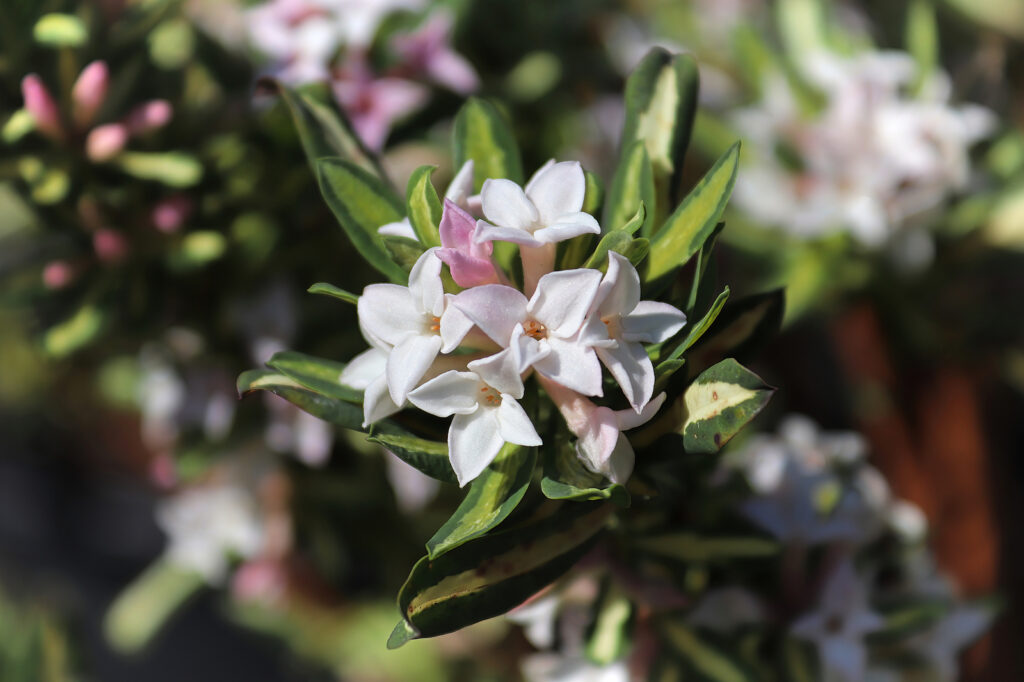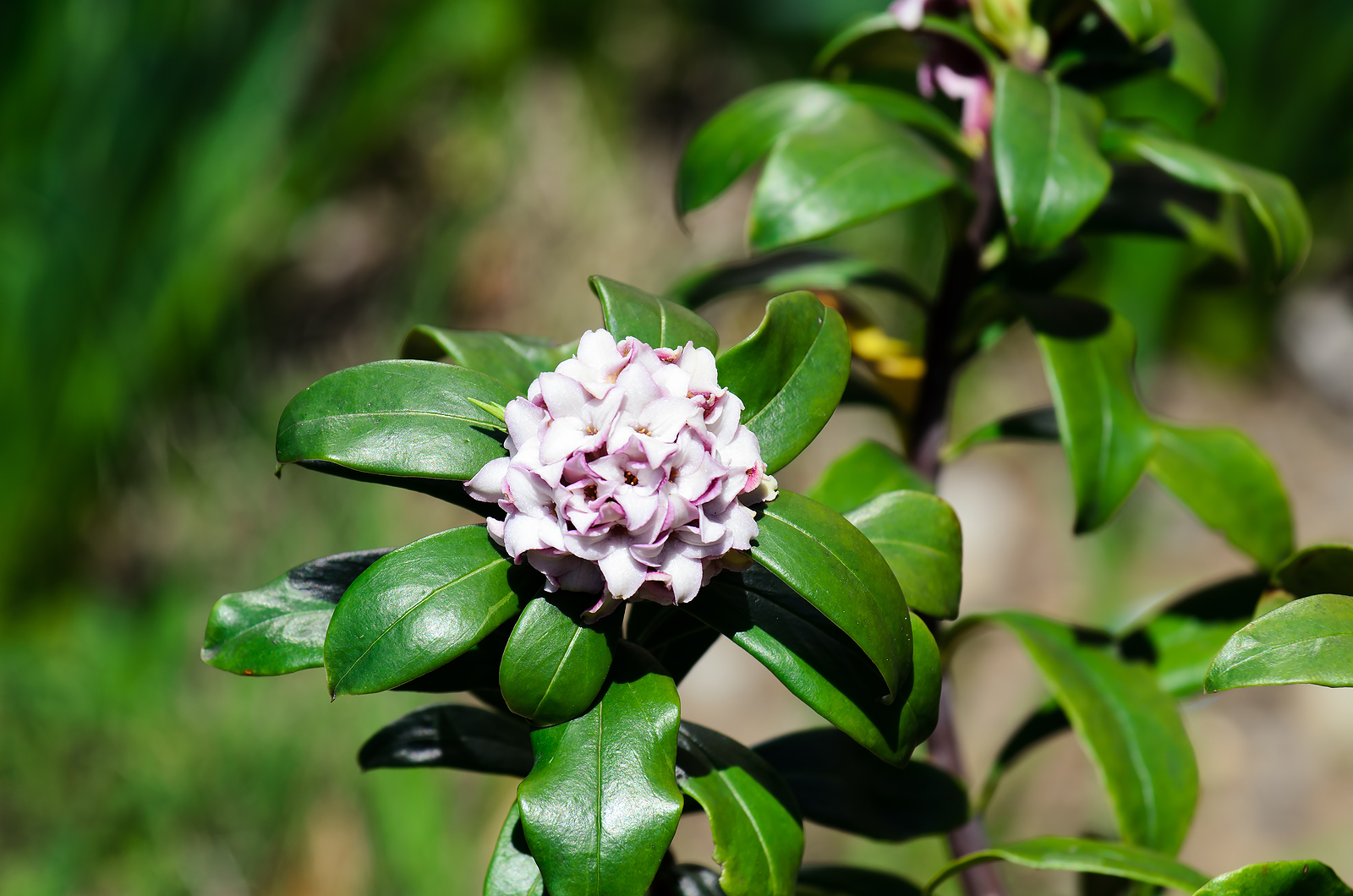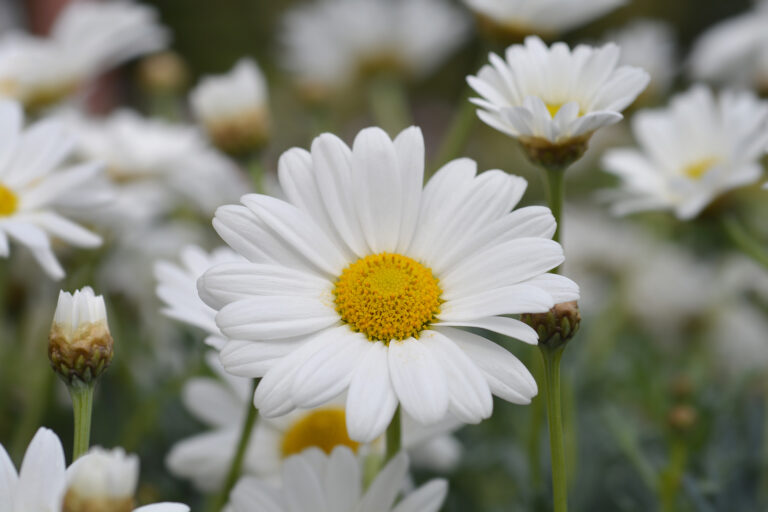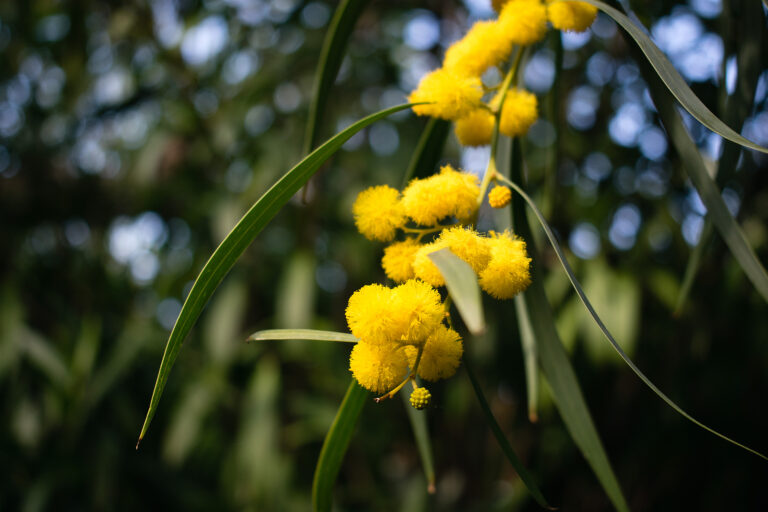How to Grow and Care for Daphne
Daphne bears exceptionally fragrant four-lobed and tubular blossoms in early spring. Flowers are borne singly or in short clustered heads varying from red-purple to pink, lavender-pink, lilac, yellow, and white.
There are about 70 species of Daphne. Some are low-growing, matting shrubs, others grow 3 to 4 feet tall, and still, others grow as tall as 10 feet. Most have intensely sweet fragrant flowers and should be planted where they can be enjoyed–near doorways and walkways.
Two early spring blooming daphnes are Daphne genkwa (lilac daphne) and Daphne mezereum or mezereon (February daphne). Both are deciduous and grow to about 3 feet tall. Lilac daphne bears half-inch flowers in clusters along the end of leafless branches in early spring–like lilacs. February daphne opens in late winter in mild winter regions and in mid-spring in colder climates. The flowers are stemless and appear along the upper portions of the branches.
Daphnes are best planted where they are sheltered from the mid-day sun. They grow best where the soil stays cool. Daphnes are not long-lived; they sometimes fall into decline for seemingly no reason.
Get to Know Daphne
- Plant type: Deciduous spring-, summer-, or fall-blooming shrub
- Growing Zones and range: Zones 4-9
- Hardiness: Hardy
- Height and width: 1 to 4 feet (1.2m) tall, 3 to 10 feet (.9-3m) wide
- Foliage: Narrow, strap-shaped, dark-green leaves are alternate
- Flowers: White or pink and shades of red-purple and lavender; fruits are poisonous
- Bloom time: Spring or early summer; daphne sometimes reblooms in autumn
- Uses: Foundation shrub or at the front of a shrub border
- Common name: Daphne
- Botanical name: Daphne spp.
- Family: Thymeliaceaceae
- Origin: Europe, North Africa

Where to Plant Daphne
- Plant daphne in full sun to light shade depending on the species
- Grow daphne in humus-rich to average, very well-drained but moist soil.
- Daphne prefers neutral or slightly alkaline soil
When to Plant Daphne
- Plant daphne in late winter, spring, or fall.
- Transplant container-grown plants in early spring or fall
Planting and Spacing Daphne
- Space daphne 3 to 10 feet apart depending on the variety.
How to Water and Feed Daphne
- Daphne needs moderate to ample water; keep the soil evenly moist. Daphne dies easily if the soil is too wet.
Daphne Care
- Mulch around daphne to keep the soil cool and conserve soil moisture.
- Daphne does not need pruning apart from light shaping.
Growing Daphne as a Houseplant
- Daphne odora, winter daphne, can be grown as a houseplant.
- Grow daphne in a warm room where humidity is average and light is bright.
- The potting medium should be allowed to dry slightly between waterings.
- Fertilize once in the spring with a fertilizer for acid-lowing plants.
- After the plant has flowered, it can be cut back to keep [p it compact.
Daphne Pests and Diseases
- Daphnes are not long-lived and tend to suffer progressive die-back after a few years.
- Daphne can suffer from viral diseases that cause leaf mottling and grey mold.
Daphne Propagation
- Seeds need cold treatment before sowing.
- Layer daphne branches in fall.
- Take cuttings softwood cuttings in late summer

Daphne Varieties to Grow
- Daphne x burkwoodii, Burkwood Daphne: Semi-evergreen and has a number of variegated cultivars; grows 3 to 4 feet high and wide; small clusters of fragrant flowers that are white then age to pink at branch ends; blooms late spring and late summer in Zones 5-7.
- D. caucasica, Caucasian daphne: Deciduous; grows 4 to 5 feet tall and wide; intensely fragrant white flowers.
- D. cneorum, Garland daphne: Grows 1 foot tall and 3 feet wide; trailing branches with narrow leaves; clusters of fragrant rosy light pink flowers in spring; several cultivars.
- D genkwa, lilac daphne: Grows 3 to 4 feet tall and wide; clusters of lilac-blue, scentless flowers.
- D. mantensiana: Evergreen grows to 18 inches high, spreading to 3 feet; fragrant purple flowers at branch tips; densely branched.
- D. mezereum (mezereon), February daphne: Deciduous, erect growing to 4 feet; fragrant reddish-purple flowers in short clusters; cultivar ‘Alba’ has white flowers.
- D. odora, winter daphne: Very fragrant; has purple-and-white flowers and can grow to 4 feet tall and twice as wide in Zones 7-9; plant where it will get mid-day shade; cultivar ‘Aureo-Marginata’ is hardier and has yellow-edged leaves.
Daphne Frequently Asked Questions
Q: What does daphne need to grow successfully?
A: Daphne likes rich friable (well-worked) soil that is not too acidic. Add aged compost or leaf mold to the soil before planting or as a side dressing at any time. Daphne favors moist but not wet soil. Daphne grows best in full sun but will also grow in partial shade. Mulch the soil to keep it as cool as possible during the summer months.
Q: The leaves of my daphne are turning yellow. Why?
A: Yellowing daphne leaves may be chlorosis, due to alkaline soil which makes iron unavailable. Treat the soil with iron chelates. Another cause of yellowing leaves could be root rot; avoid planting in areas of high moisture content.
Q: How do I propagate daphne?
A: Start new daphne plants from softwood cuttings of young growth in late spring or early summer. Start new plants from semi-hardwood cutting or more mature growth in mid- or late summer. New plants can also be started by ground layering.







